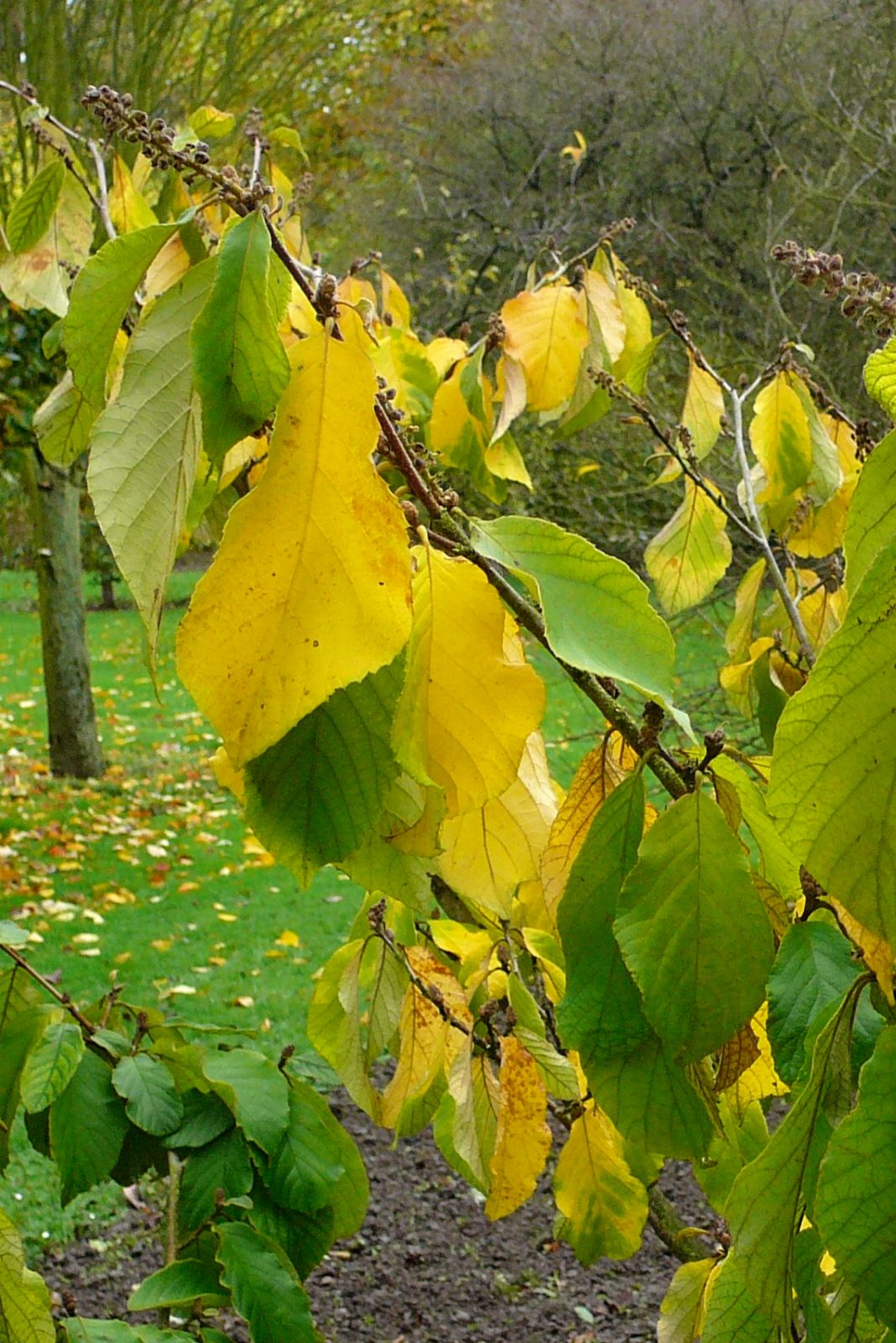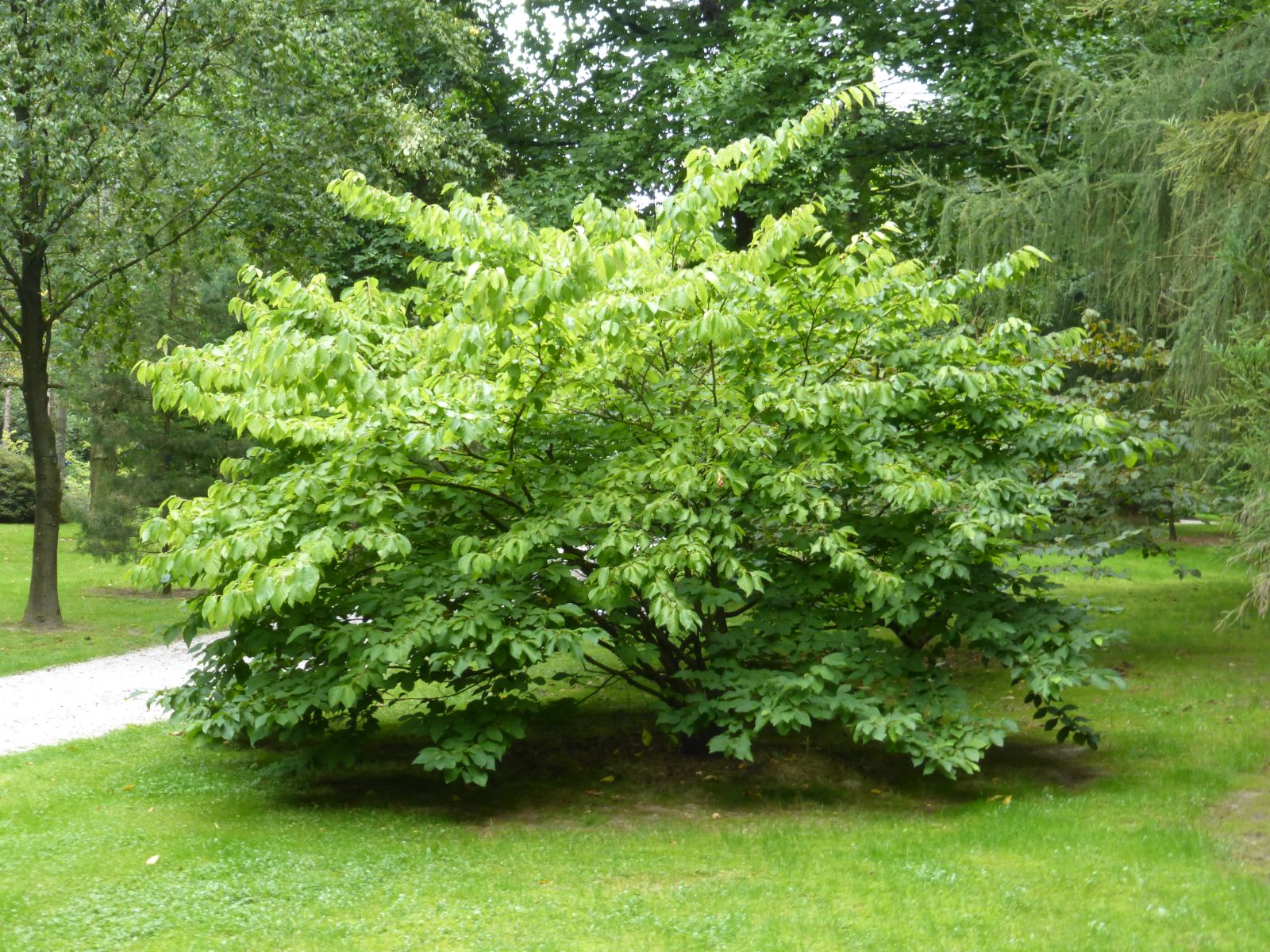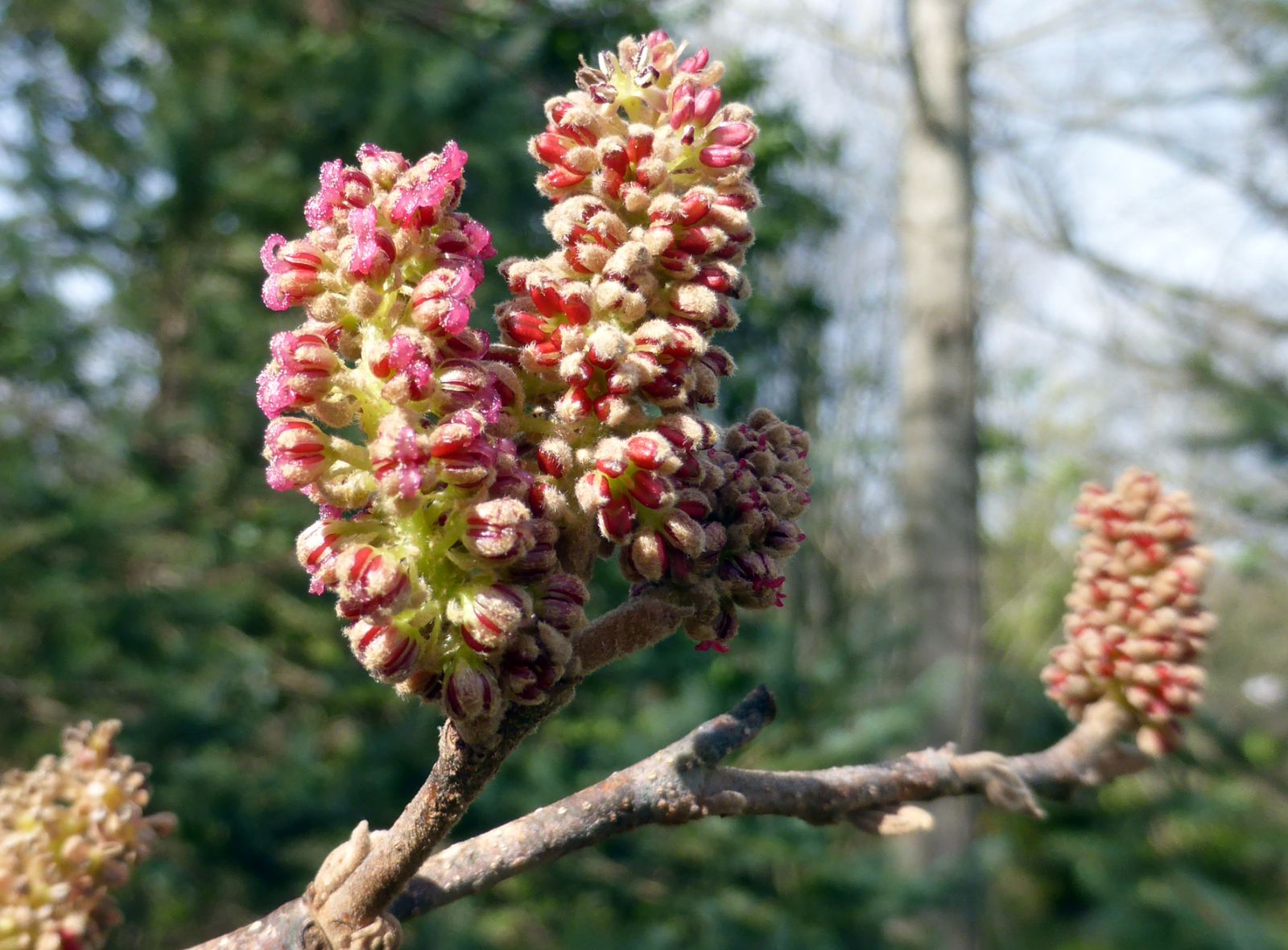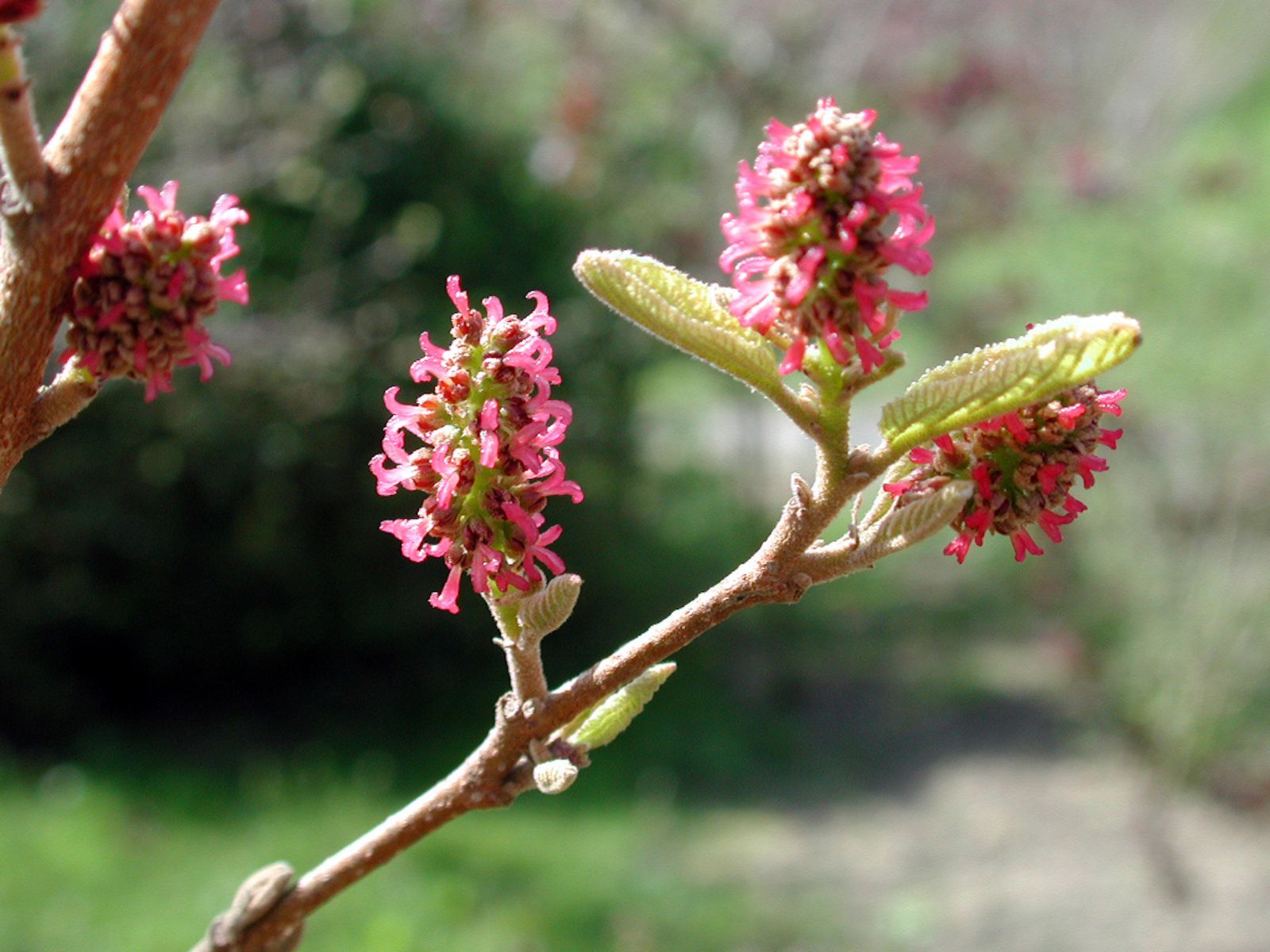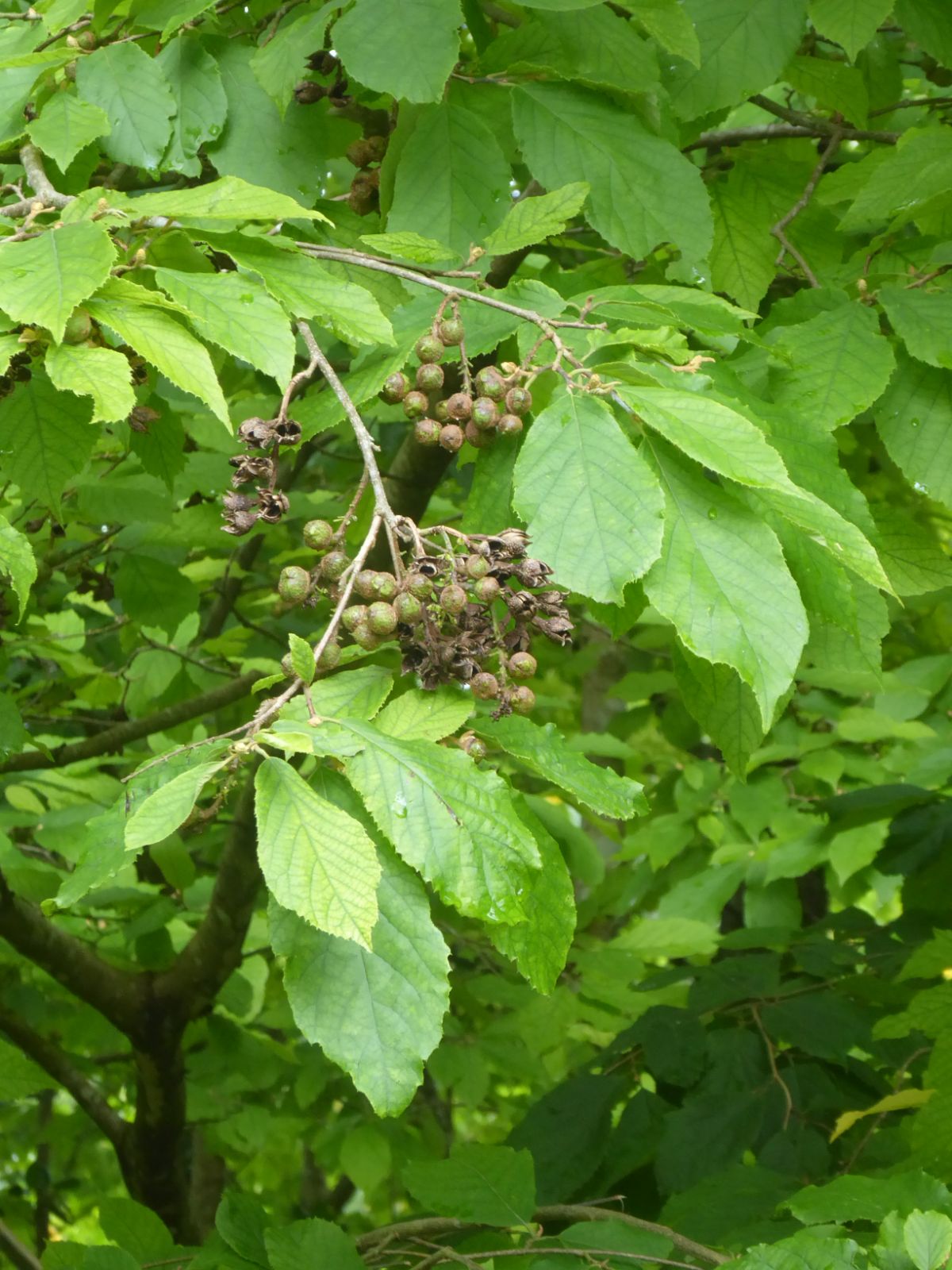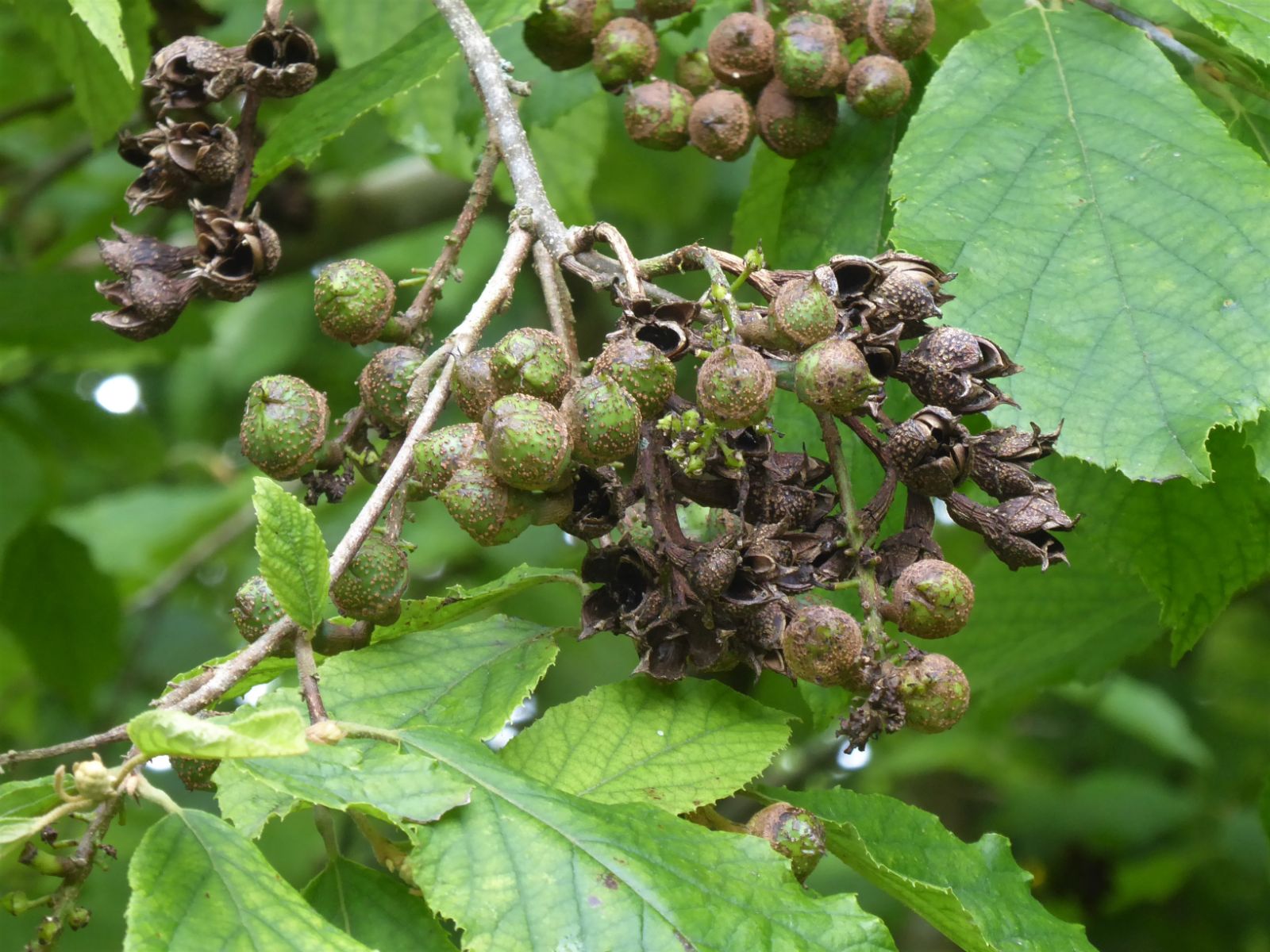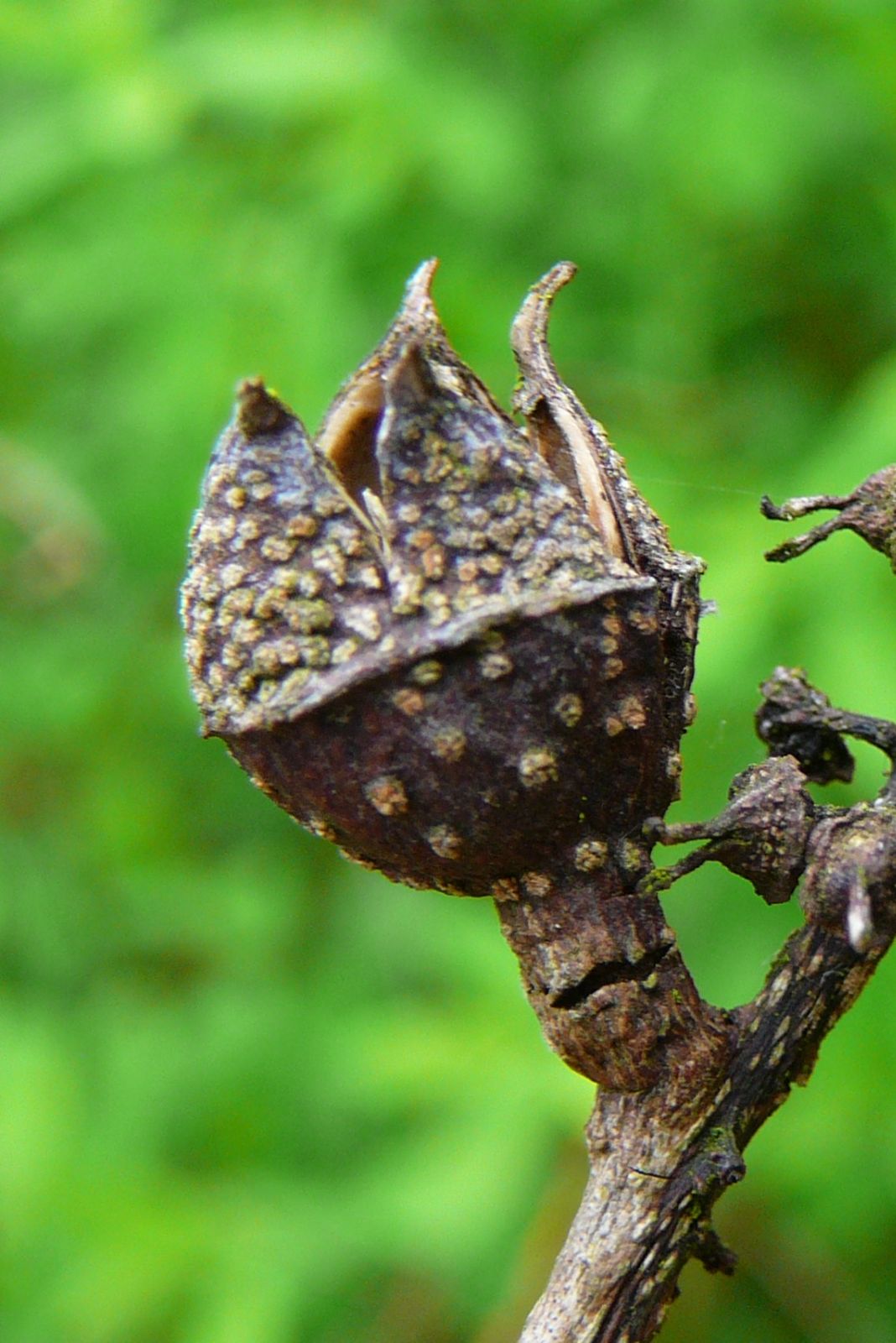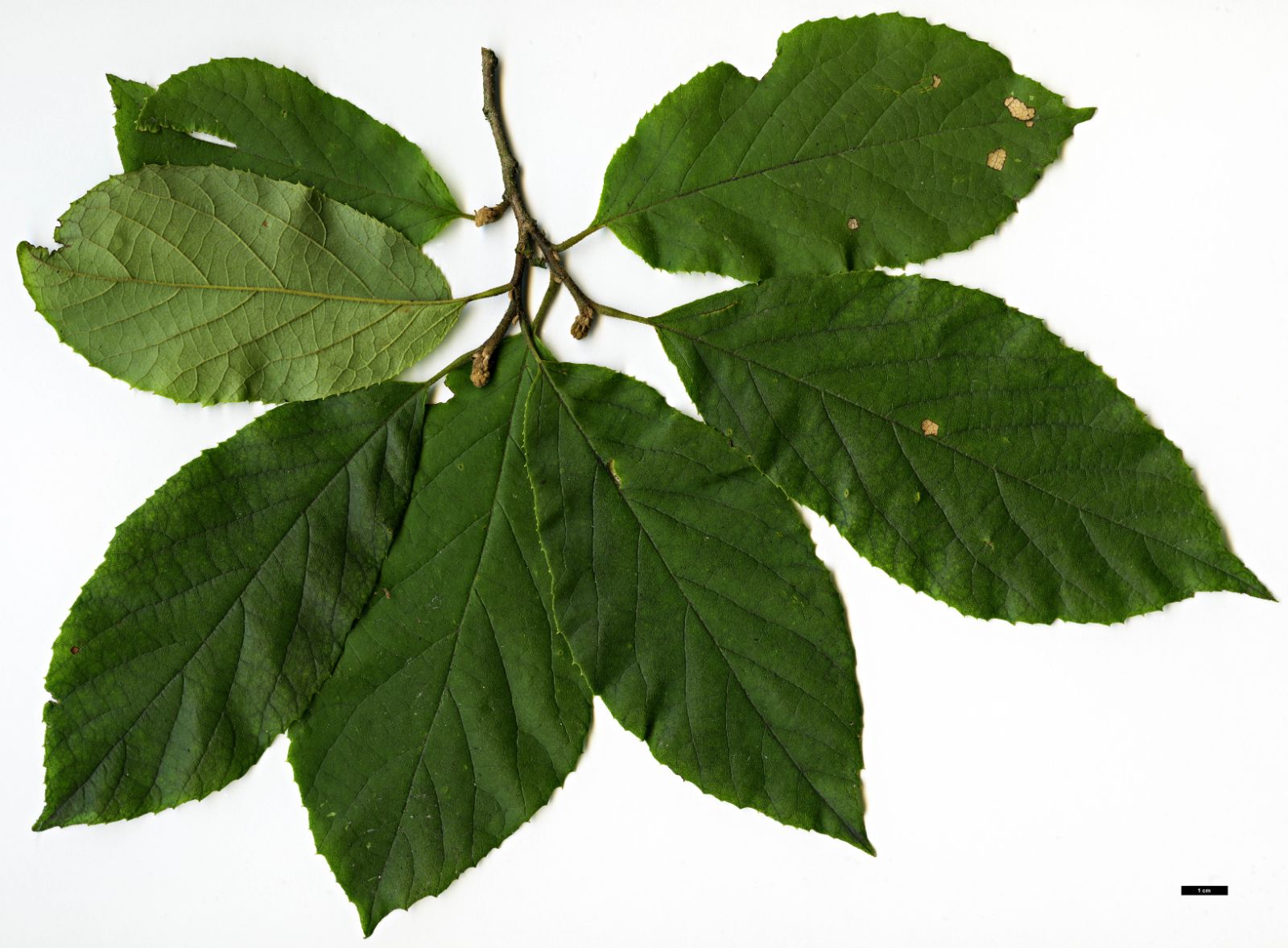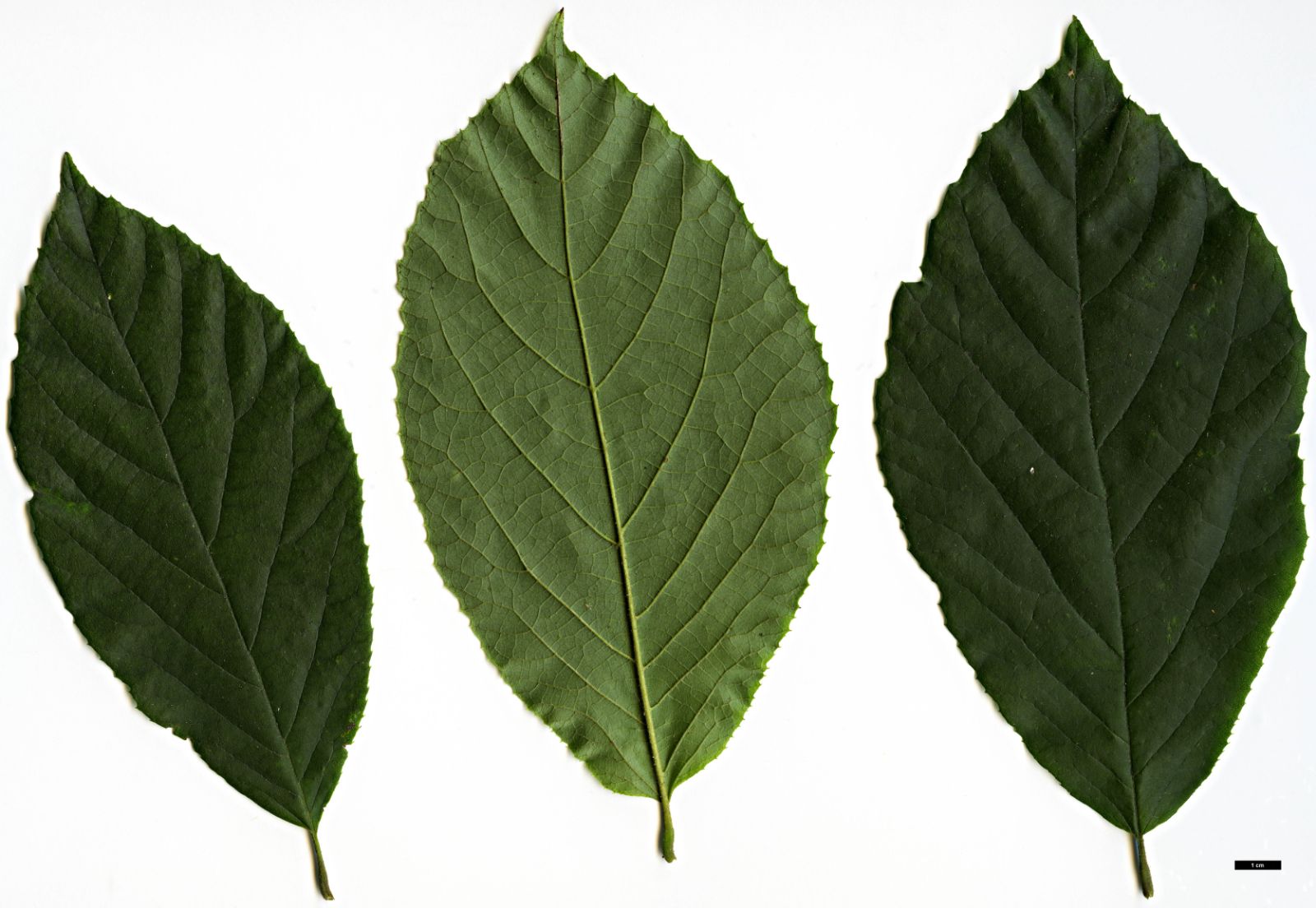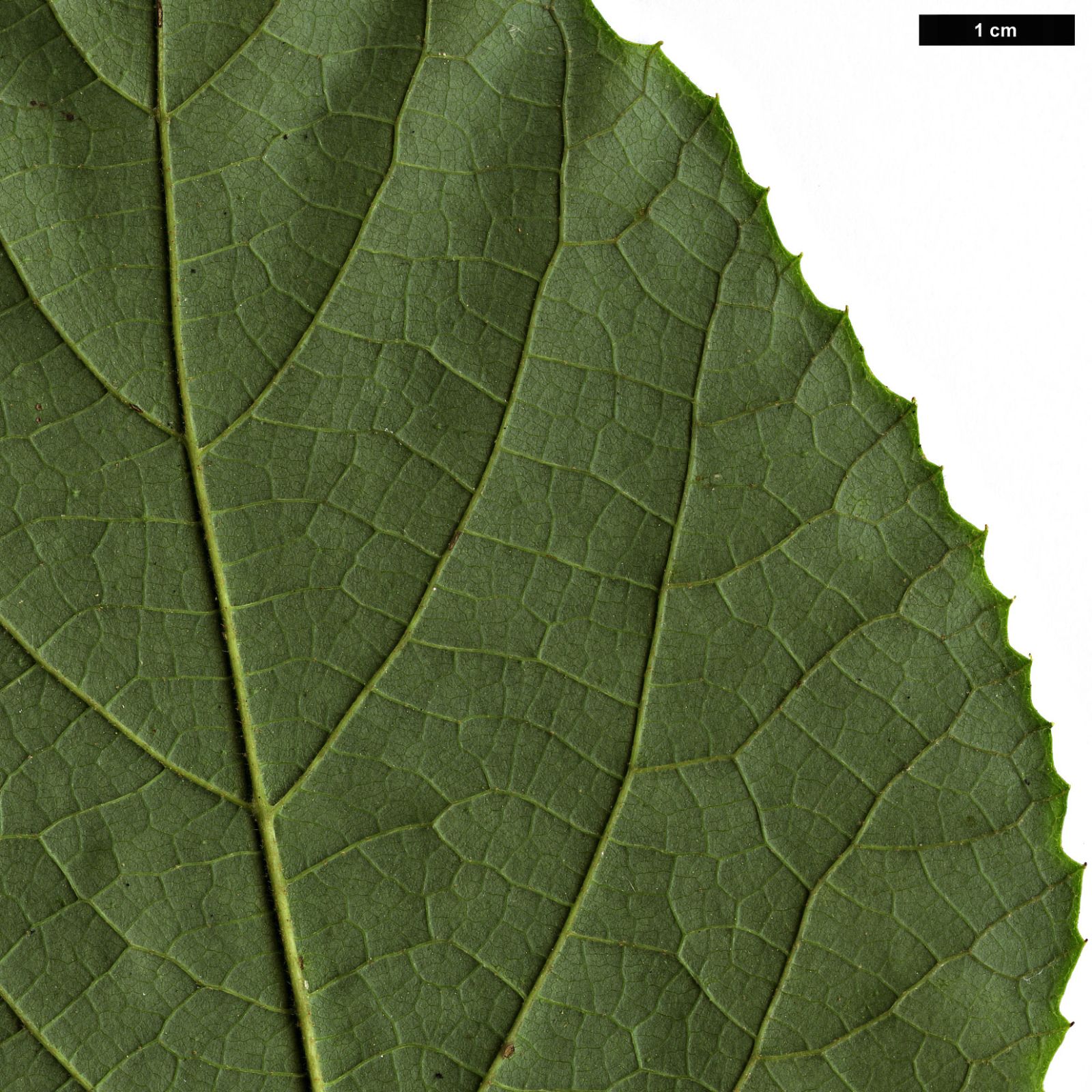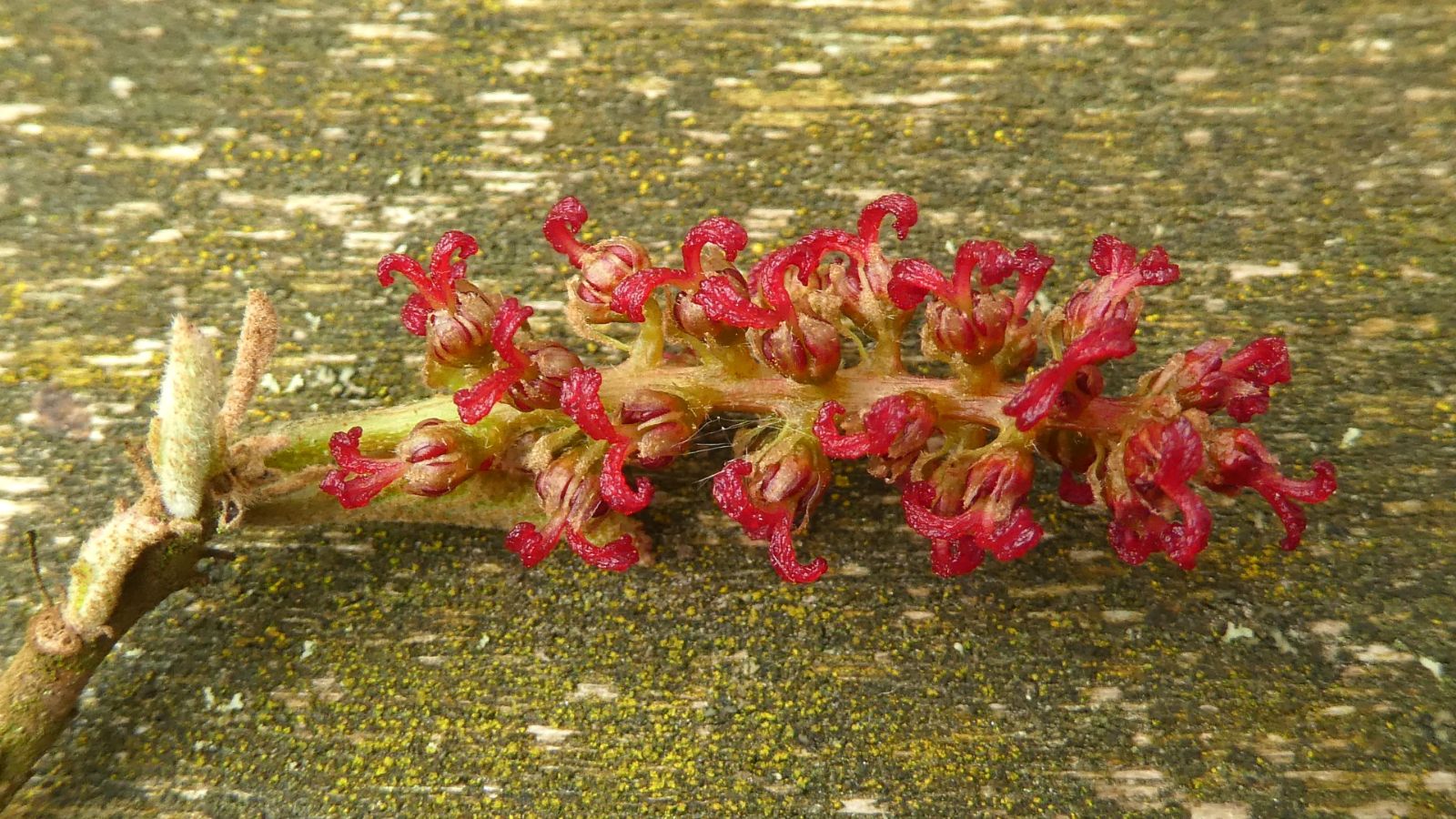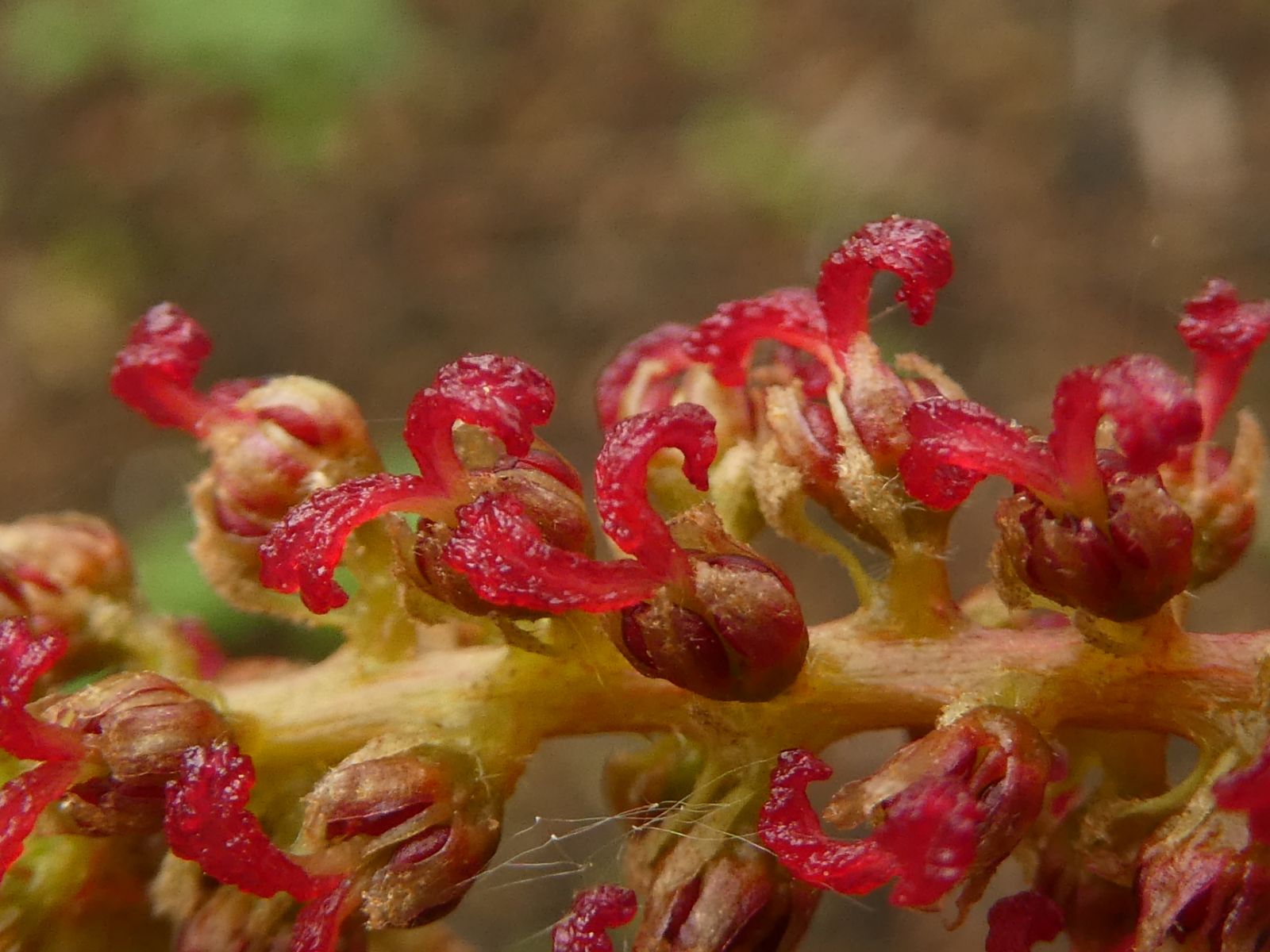Fortunearia sinensis
Credits
Article from Bean's Trees and Shrubs Hardy in the British Isles
Recommended citation
'Fortunearia sinensis' from the website Trees and Shrubs Online (treesandshrubsonline.
Genus
Other taxa in genus
A monoecious, deciduous shrub of strong spreading growth, ultimately 20 to 25 ft high; young shoots, leaf-stalks and flower-stalks covered with starry down. Leaves obovate, tapered more abruptly towards the apex than the often rounded or slightly heart-shaped base, unevenly toothed, 3 to 6 in. long, about half as much wide, dullish green and glabrous above, downy on the midrib and veins beneath; stalk 1⁄8 to 1⁄3 in. long. Flowers green, borne in terminal racemes either entirely male or entirely bisexual; the former are catkin-like, up to 3⁄4 in. long, with the small flowers very densely packed; the latter are 1 to 2 in. long with flowers 1⁄6 in. across. Capsules 1⁄2 in. long.
Native of W. China; discovered and introduced by Wilson to the Arnold Arboretum in 1907, thence to Kew in 1910, where it is very hardy and vigorous. Apart from its botanical interest there is little to recommend it. The flowers, which at Kew appear in February, are inconspicuous, and as regards foliage it has about the same ornamental value as the hazel.

